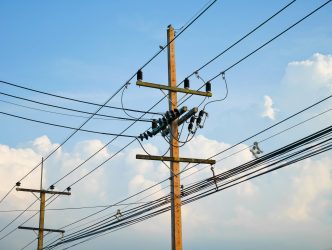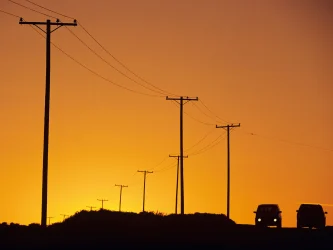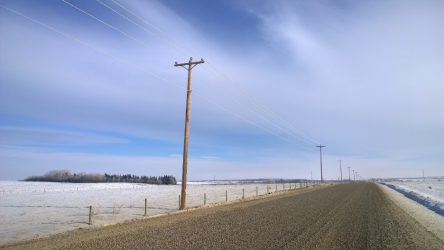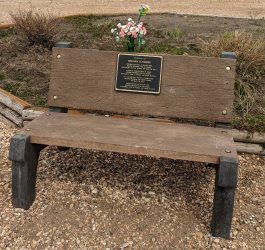Country Power ~ The Electrical Revolution in Rural Alberta
Electrification forever changed the face of agriculture in Alberta. Sharing the stories keeps the history alive.
This book recounts the history of the people and events that made possible the implementation of rural power in our province. The original book was released in 1993 in Edmonton AB. It shares the story of the Alberta REA cooperative movement from its inception in the late 1940s to the early 1990s.
The 2013 reprint is a new smaller format (5.5 x 8.5) but it includes all the original content, pictures, and historical information. The book is a tribute to the passionate men and women who brought a change to their rural livelihood by bringing electrification to the farmhouse and farmyard.
Sample excerpt from the book:
Through Storms and Childbirth
Anyone who’s ever paid a power bill has made the odd grudging remark about his or her power company. Farmers are known for their dislike of large corporate bodies, so rural electrification gave them the opportunity to complain once a month. But then there was the lineman.
When the company came to call, in the person of the lineman, it might have looked like an old and trusted friend coming to visit. As the men who had physically brought the electric revolution to rural Alberta, linemen were held in the highest regard.
When the crew first arrived to connect the line to the farm, it wasn’t uncommon to see a family member roaming out with a cold drink or a sandwich in appreciation of the linemen’s efforts. Some families even rewarded them with a place at the supper table.
Linemen, also called servicemen, were known to go far out of the way of duty to meet their obligations to the customer. One prime example is that of Tim Fooks, who ventured out into a snowstorm on a service call for Canadian Utilities in December 1955.
The call took him to the Campbell Lake service area. Snow and high winds cut Fooks off from his destination, forcing him to wait out the night at the home of a local farmer, Ralph Strome.
Bad luck for serviceman Fooks was good luck for farmer Strome. Fate had delivered the serviceman to the place he was really needed, for Mrs. Strome went into labour that same evening.Two amateur doctors are apparently better than one: the men saw Mrs. Strome through the delivery of a healthy boy.
The advent of rural electrification meant power company employees were dealing with elements they had never imagined in the towns or cities. For instance, it wasn’t common in urban areas to have power interrupted by an eagle with a 76·inch wingspan swooping to a perch on the line, as happened at Valleyview in1957.
One Calgary Power man remembers the nuisance posed by birds who perched and pecked at insulators, wires or anything metal before the power was switched on. His crew used alive wire to slice the bottoms off glass jugs, then placed the jugs over the top of the insulators to protect them.
The sheer task of getting to a problem to fix it could be demanding, and not only in the worst days of winter. A service call on the Swan Hills transmission line took two Canadian Utilities men through what is possibly the worst terrain of all: muskeg. The Bombardier caterpillar vehicle they had wisely brought along on this May 1960 outing was no match for the soupy ground. It made only limited progress before sinking into the ooze.
Their goal was all of three miles away. Walking, or rather sloshing,through the muck got them there three hours later. Pulling up from every sticky step flared their feet into a mass of blisters.
Along the way, the men stopped to eat their meagre provisions, one hamburger each. Not having a taste for the buns, they pitched them away, then settled down for a nap. It wasn’t long before the men bolted awake, alarmed to see a black bear gobbling down their leftovers. They chased him away, and trudged on to rescue the line, the victim, it turned out, of a fallen tree.
Threats to rural lines came at times from human sources. Calgary Power reported with disgust in the early years that insulators on power poles were favourite sport for target shooters. Shattered equipment demanded a quick fix, since customers had limited patience for power outages.
The role of Mr. Fix-all was one that commanded the most respect among customers. Winter storms had the double curse of wiping out transmission lines, then leaving people without power in cold weather – when they were least anxious to deal with it.
Service crews came into their own in such crises, often producing miracles. The Stettler Independent glowed with praise of the Canadian Utilities repair crews that jumped to the task minutes after a 1965 storm smashed poles and tangled lines: “Just as people were resigning themselves to another bone chilling night in darkness, the blessed lights came on.” The crews, 130 men in total, replaced the 500 or so destroyed poles in biting winds and cold.
Calgary Power had a challenge of its own when a freak snowstorm throttled the area between Cochrane and Strathmore in June 1951.The weight of the ice snapped power poles and tangled wires, knocking out the power for several days.
Luckily, it was a passing phenomenon, and it turned sunny for the repair crews!
(source Country Power ~ The Electrical Revolution in Rural Alberta (c) AFREA 1993, 2013)

To Order a copy of the book please visit: https://www.smashwords.com/books/view/283963
For Questions on Ordering the Book please email us at:
communications@afrea.ab.ca







